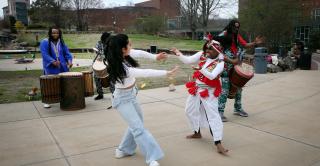
Click Here to download the Emergency Action Plan
Central Lightning Policy – Automated Lightning Warning & Prediction System
Based on NATA & NCAA Recommendations
Central's Athletics utilizes a Lightning Prediction System. This system is fully automated and all coaches and athletes must immediately leave the athletic fields upon sounding of the horn. During electrical storm seasons, the coaching staff is responsible for monitoring local forecasts/warnings and actively looks for the signs of threatening weather. Coaches should obtain a weather report each day before practice or an event. Be aware of potential thunderstorms that may form during scheduled intercollegiate athletics events or practices. Also, please be aware of the National Weather Service issued thunderstorm “watches” and “warnings”, as well as the signs of thunderstorms developing nearby.
“Watch” – conditions are favorable for severe weather to develop in the area.
“Warning” – severe weather has been reported in an area and for everyone to take proper precautions.
Local weather reports can be obtained at:
Lightning is a severe hazard that must be viewed seriously. Everyone should immediately seek shelter any time they believe Lightning threatens, even if the signal has NOT sounded. Postpone or suspend activity if a thunderstorm appears imminent before or during an activity or contest, (irrespective of whether lightning is seen or thunder is heard) until the hazard has passed. Signs of imminent thunderstorm activity are darkening clouds, high winds, and thunder or lightning activity.
- The Lightning prediction and warning system will sound one-15 second blast of the horn signaling suspension of all activities. A strobe light located on the north end of the soccer field (near blue storage shed) will begin flashing and remain flashing until safe conditions return.
- Athletes and coaches must immediately seek an appropriate safe shelter.
- Activities may resume only after 3 –5 second blasts of the horn is sounded and the strobe light stops flashing.
- If you remain outdoors after the warning is issued you do so at your own risk.
- Safe Shelter For Central Athletic Fields: The nearest designated safe structure or location is the stadium locker rooms or closest dormitory. *Please note that the dugouts are not considered safe shelters during electrical storms. It is not safe to shower, bathe, or talk on landline phones while inside of a safe shelter during thunderstorms
- A safe location is any substantial, frequently inhabited building. The building should have four solid walls (not a dugout), electrical and telephone wiring, as well as plumbing, all of which aid in grounding a structure i.e. stadium locker room
- The secondary choice for a safer location from the lightning hazard is a fully enclosed vehicle with a metal roof and the windows completely closed. It is important to not touch any part of the metal framework of the vehicle while inside it during ongoing thunderstorms.
- It is not safe to shower, bathe, or talk on landline phones while inside of a safe shelter during thunderstorms
- Avoid being the highest point in an open field, in contact with, or proximity to the highest point, as well as being on the open water. Do not take shelter under or near trees, flagpoles, metal fences or light poles.
- Should you be caught in a Lightning storm, assume the lightning safe position (crouch on the ground, weight on the balls of the feet, feet together, head lowered, and ears covered) for individuals who feel their hair stand on end, skin tingle, or hear “crackling” noises. Do not lie flat on the ground.
- If system fails to warn: Use the Flash-to-Bang count to determine when to go to safety. By the time the flash-to-bang count approaches thirty seconds all individuals should be inside a safe structure.
- Flash-to-Bang: To use the flash-to-bang method, begin counting when sighting a lightning flash. Counting is stopped when the associated bang (thunder) is heard. Divide this count by five to determine the distance to the lightning flash (in miles). For example, a flash-to-bang count of thirty seconds equates to a distance of six miles. Lightning has struck from as far away as 10 miles from the storm center.
- Once activities have been suspended, wait at least thirty minutes following the last sound of thunder or lightning flash prior to resuming an activity or returning outdoors.
- Observe the following basic first aid procedures in managing victims of a lightning strike:
-
- Survey the scene for safety.
- Observe the following basic first aid procedures in managing victims of a lightning strike:
- Survey the scene for safety.
- Activate local EMS.
- Lightning victims do not ‘carry a charge' and are safe to touch.
- If necessary, move the victim with care to a safer location.
- Evaluate airway, breathing, and circulation, and begin CPR if necessary.
- Evaluate and treat for hypothermia, shock, fractures and/or burns.
- All individuals have the right to leave an athletic site in order to seek a safe structure if the person feels in danger of impending lightning activity, without fear of repercussions or penalty from anyone.
-



